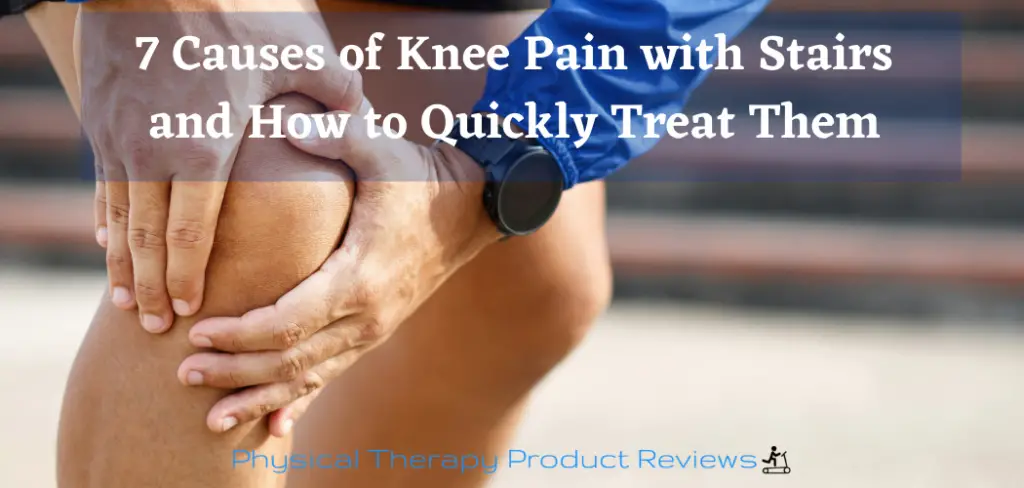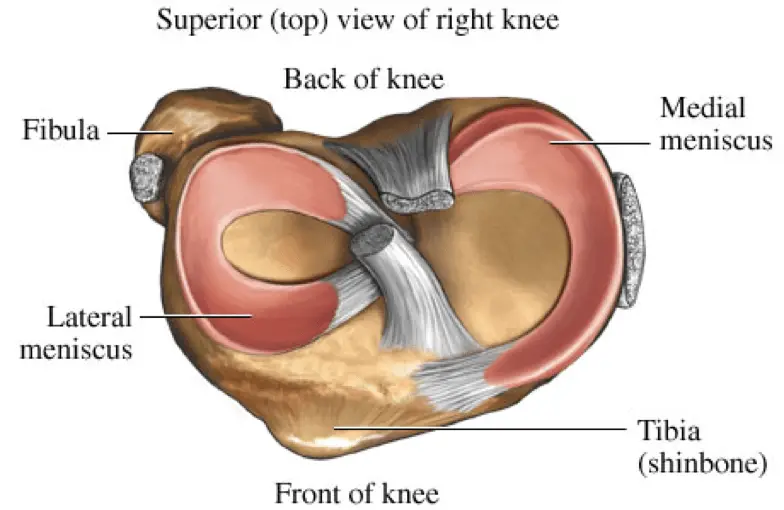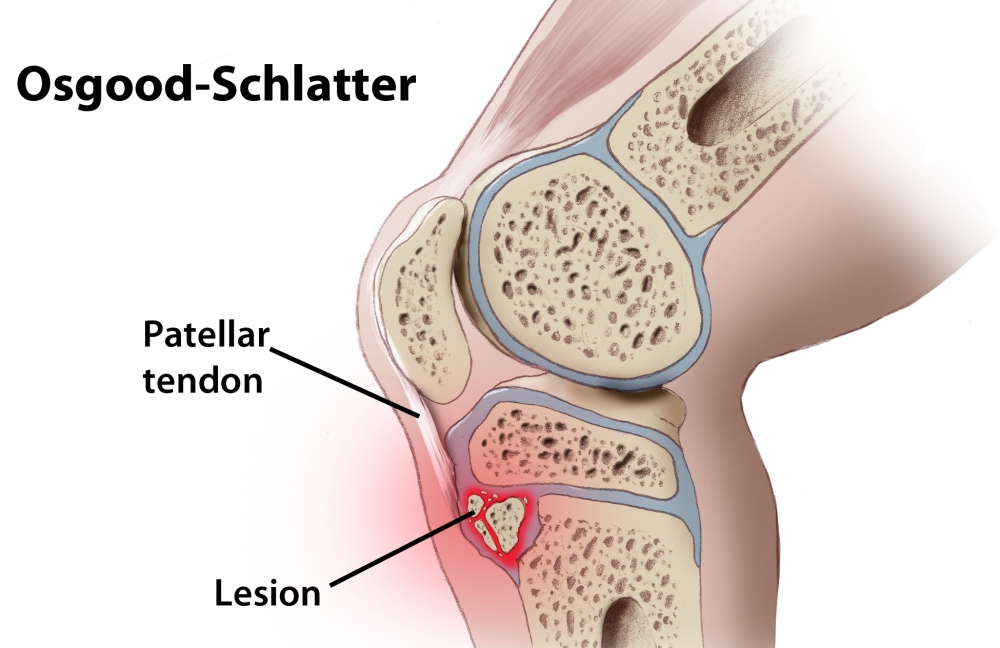If you’ve been struggling with knee pain when taking the stairs, you’re not alone. This is a common problem that many people face and is a great early indicator that your knees are ailing and may need focused attention.
It’s time to listen to those knees and address the pain before it gets worse.
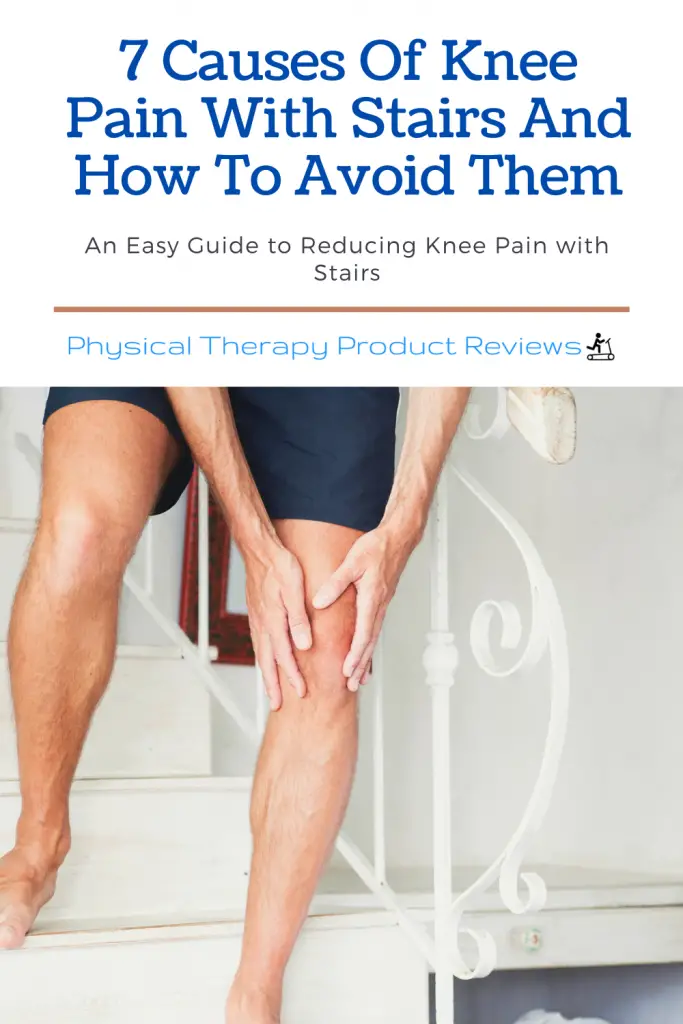
There are several causes of knee pain experienced during stairs, but fortunately, there are also ways to avoid and treat them. The more you know and understand about the sources of discomfort, the better you will address them on your own.
This blog post will discuss seven of the most common causes of knee pain with stairs, how to treat them at home, and what you should do to avoid these issues from returning.
Pain in the Knees With Stairs
Many people struggle with knee pain when going up and down the stairs.
It is one of the most common knee problems reported by patients of all ages. It can affect both men and women and tend to be more prevalent in those over 40 years old but also occur frequently among young people depending on the cause.
In most cases, the pain is more severe with descending the stairs than with ascending the stairs.
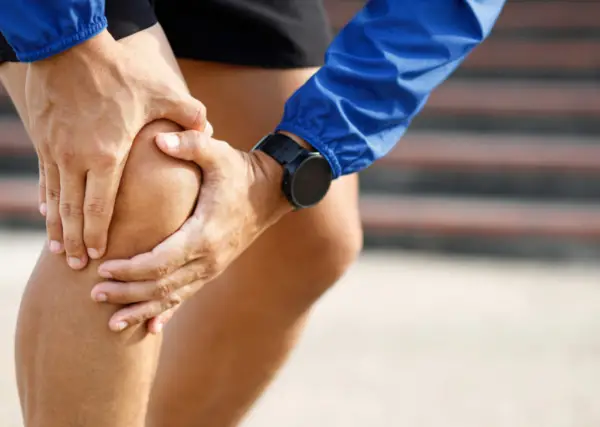
This is due to the higher forces on the joint when going down a step. The required muscle strength to control your bodyweight down a step is significantly greater than going up a step.
If the muscles or joints can’t tolerate the amount of force for essentially a single leg squat down the stairs, it can cause stress in the soft tissue in and around the knee joint and causes increased pressure on the weight-bearing surfaces of the joint.
In short, if the body isn’t strong enough to support the knee, it crosses the threshold and starts signaling pain to the brain. This is the body’s warning system that something is awry.
Causes of Knee Pain with Stairs
Even though there are many different causes of knee pain, we’ve compiled a list of the most common sources. For each source, we’ll also give helpful information on how to treat the condition at home or a link to an article that might be helpful.
As a reminder, it often takes 4-6 weeks to improve pain levels and the ability to navigate stairs pain-free once the pain has started.
You’ll have to be patient with the process and do your best to be consistent during that time.
Lack of Strength in the Quads and Hips to Navigate Stairs
Most people don’t believe us when we tell people their issue is poor leg strength. However, going down a step on a stair is actually a single-leg squat.
Stand in front of a mirror and do a single-leg squat to test. First, do one on your right leg and then try on your left leg. Watch your form and make a mental note of the differences.
Were you able to get as deep into the squat, and was your balance on each leg equal?
Probably not right. I’m sure that achy knee was much harder to get as low, and the balance was perhaps worse.
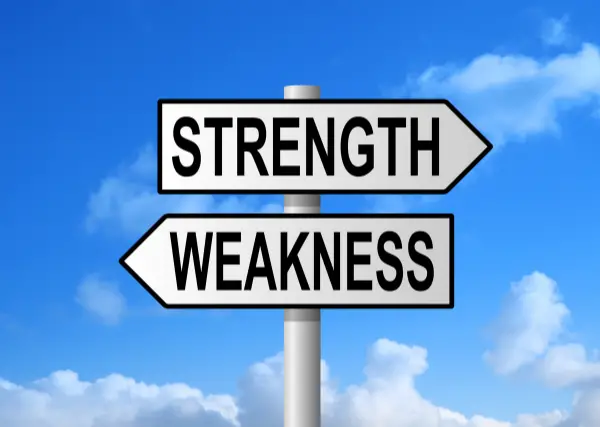
When you walk or descend stairs, it takes more knee flexion to navigate the task. This means that the muscles in front of the knee (the Quadriceps) have to work harder to control your bodyweight down each step versus just walking on flat ground.
If those muscles aren’t strong enough, they can’t tolerate the amount of force and will fatigue quickly. This leads to strain in the tendons or extra pressure on the bones in the knee joint.
How To Address:
The best way to address this is by doing targeted exercises that strengthen the quads and hip muscles. You don’t need a lot of equipment for this – just some basic bodyweight exercises like squats, lunges, and bridges.
One of our favorite strengthening exercises to build muscle quickly is the Bulgarian split squat. You can see our in-depth article on the split squat here.
Knee Osteoarthritis Limiting Stairs
Knee arthritis is one of the most common causes of knee pain with stairs, especially in older adults. This occurs when damage to the smooth cartilage that covers the ends of bones in your knees. The knee becomes stiff and painful over time and can problems with sending and especially descending stairs.
It can be challenging to move around, as knee osteoarthritis causes swelling in the joint, making moving your knee more challenging than usual.
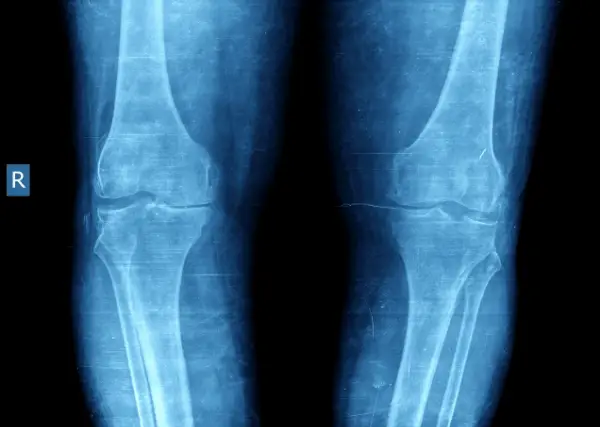
You might also experience pain when going up and down stairs due to this condition because there may be less cartilage for shock absorption and less tolerance for pressure.
This is compounded further in almost all cases by any weakness that might be present from years of favoring the knee due to progressing deterioration of the joint.
How to Address:
The first and most important way to fix this is to get stronger to take pressure off the bones in the knee joint. The stronger the quad muscles are, the less stress on the bone.
Secondly, you can wear a knee brace that helps support the knee joint.

One type of knee brace that we recommend starting with is a compression sleeve. It’s the easiest to use and the least invasive. You can wear it anytime you are going to do stairs or anything more active that day. If this brace doesn’t work, we recommend moving on to the second type.
The second type of knee brace is an unloader knee brace. As the name implies, this type of knee brace is designed to “off-load” a part of the knee joint. Most knee arthritis is located on the inside of the knee, so wearing the brace to support the inside of the knee can make a significant difference in your pain levels.

Meniscus Tear
A meniscus tear is a common knee injury that occurs when there has been damage to the cartilage of your knee joint. This type of injury can happen during twisting motions in sports or from daily life’s simple wear and tear. Its most common mechanism is twisting on a knee planted on the ground.
Depending on how bad a tear you have, stairs may become very painful as there is less tolerance for pressure and shock absorption due to the damaged knee cartilage.
A tell-tell sign of a meniscus tear is that it will catch and lock during activities such as stairs, deep squatting, and kneeling activities.
How to Address:
The first step in addressing is to remain active and ensure that you don’t avoid using the knee. The more you use it, the sooner the knee will heal.
Some Meniscus tears will improve with stretches and exercise, while some may need surgery to fix.
Focus on increasing range of motion as soon as possible, especially getting the knee entirely straight, also known as full knee extension.

After that is achieved, you want to be able to increase your quad and hip strength to as strong as they can be. The stronger the thigh muscle gets, the less pressure on the cartilage.
Finally, practice your squats and deep lunges. At first, there may be pain and catching, but the pain and catching should gradually improve over time and repetition.
Patellofemoral Pain with Stairs
Patellofemoral pain syndrome, also commonly referred to as “Runner’s knee,” is a condition that affects the kneecap.
This type of knee pain is prevalent in athletes and young adults who participate in activities that involve a lot of running or jumping, such as basketball and volleyball.
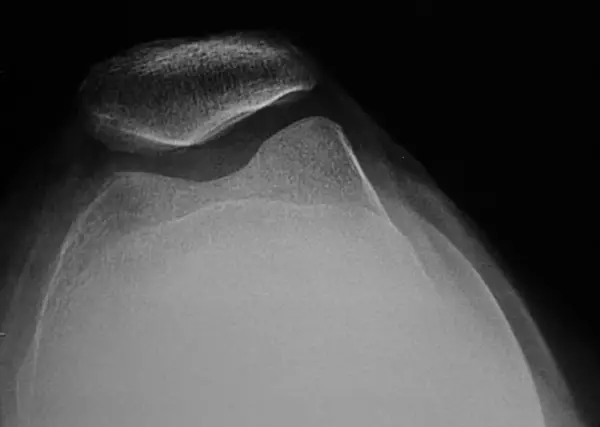
Symptoms can range from mild discomfort to severe knee pain around the knee cap. This is most noticeable after activity, with prolonged sitting and descending stairs. You may also feel it ascending stairs but going down is noticeably worse.
How to Address:
The first step in treating this condition is getting stronger. Notice a theme yet?
Specifically focusing on strengthening the quadriceps muscle will help reduce your symptoms over time. This can be done through simple exercises such as leg extensions or straight leg raises.
Here is a helpful post on some of the best exercises for Patellofemoral Pain Syndrome.
In addition to getting stronger, you should also focus on improving your hip strength. The hips play a prominent role in knee pain, and weakness in this muscle can cause the knee cap to track improperly.


Finally, if the pain in the knee cap area persists longer than a few weeks then wearing a patella tracking knee brace is a good idea to help calm down the pain levels.
We recommend wearing these knee braces for 4-6 weeks to help with pain and let your muscles get stronger.
Patella Tendonitis
Patella tendonitis, also referred to as “Jumper’s knee,” is a condition that affects the patellar tendon.
This type of knee pain is widespread in athletes who participate in jumping and landing activities, such as basketball, volleyball, and gymnastics. This is typically caused by overuse and comes on after a change in activity in levels.
The pain is most prevalent just below the knee cap and is most noticeable with squatting and going down a set of stairs.

Tendonitis is actually small micro-traumas to the tendon itself and causes pain each time the tendon is loaded more than it can tolerate.
The best news is that strengthening the thigh and working the tendon is the best way to build the tendon up stronger.
Tendonitis does not heal with rest, it heals with progressive activity and loading.
How to Address:
The first step in treating Patella Tendonitis is changing or modifying the activity causing the problem. If it’s going up and downstairs, modify which leg you lead with.
If the pain is caused by playing sports, consider using a knee brace to offset the pain and further provocate symptoms.
This diagnosis does not need complete rest but benefits from an active recovery. If this was caused by jumping, try substituting riding a bike or swimming for a few weeks until the symptoms have reduced.
For strengthening exercises, focusing on strengthening the quadriceps muscle will help reduce your symptoms over time. This can be done through simple exercises such as leg extensions, or straight leg raises during the initial recovery.
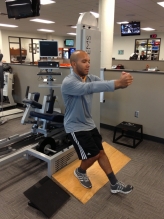
As the pain starts to feel better, try to incorporate eccentric quad strengthening exercises such as lateral step-downs or single-leg squats on a slant board.
IT Band Syndrome and Stairs
IT band syndrome is a condition that affects the outside of the knee, kneecap, and lateral thigh. This type of knee pain is most common in athletes and young adults who participate in repetitive movements like running, biking or jumping.
IT band syndrome comes on with overuse and is a result of a change in activity levels that the body isn’t prepared for.
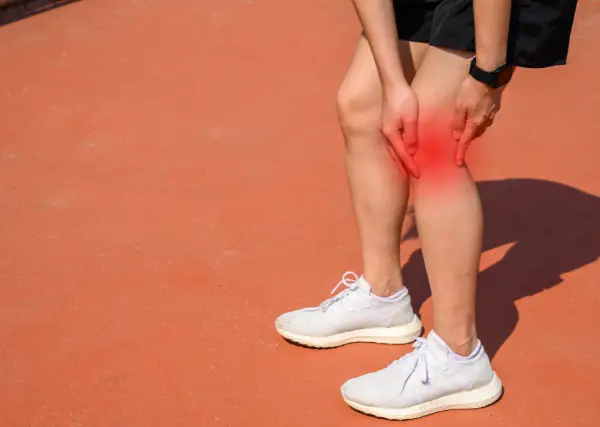
The pain is typically located on the outside of the knee, especially as the knee bend to a certain angle. This condition is also more painful descending the stairs than ascending the stairs.
How to Address:
The first step in treating IT band syndrome is modifying the activity causing the pain. Reduce your mileage running or biking is a must. Make sure that your bike is perfectly fit for you if you are increasing your distance. Get a bike fit or a running analysis from a medical professional.
Foam rolling the lateral thigh muscle helps reduce pain and calms down the nerves in the knee.
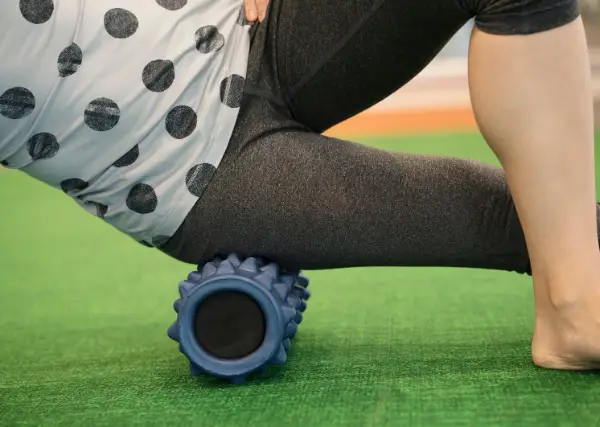
In addition, you should try using heat on the knee for 15-20 minutes after the activity. You can use a microwaveable hot pack to bring blood to the aggravated tissue to speed up healing.
After taking a break and letting it all calm down, focus on glute and hip strengthening to take pressure off the knee and keep better alignment during activity.
Knee Pain with Stairs in Adolescence: Osgood-Schlatters Disease
Osgood-Schlatters disease is a condition that affects the patella tendon and shinbone in teenagers. This most commonly occurs in children and adolescents but can also affect adults who participate in sports such as running or jumping later in life.
These sports place a lot of force on the Patella Tendon, which causes pain and inflammation at the site where the tendon and bone connect.
This force actually causes the bone at the Tibial Tuberosity to become inflamed and grow a small bump in response to the pull of the Patella’s Tendon.
This knee pain is very noticeable when going downstairs because it causes a sharp, stabbing sensation around the front of the knee and shinbone.
How to Address:
The knee pain associated with Osgood-Schlatters disease is typically very painful and can be stubborn at times. The first step in treating this condition is always resting from the aggravating activity.
Move on to other activities that do not cause knee pain, such as swimming or riding a bike for a few weeks instead of running, jumping, and cutting.
After the pain has subsided, start incorporating eccentric exercises into your routine. This will help to stretch and elongate the tendon as it heals. Try doing knee drops off a step or mini-squats with no weight.


We also recommended using a knee strap or a knee brace to help with the pain associated with Osgood-Schlatter’s Disease. These will help reduce pain and tension on the tendon as your child returns to activity.
General Tips for Reducing Knee Pain with Stairs
Pain with stairs is a common issue among many different patients. There are a few common tips that generally apply to all of the various causes and diagnoses that can help as a general rule of thumb.
- Get Stronger in your quads and hips. This is beneficial for everyone and the key to long term relief.
- Use a knee brace in the early stages of acute pain to help speed up recovery. This can be a knee strap, a knee compression sleeve, and in rare instances, a hinged knee brace.
- Reduce your mileage if running or biking is causing pain. Get a bike fit or running analysis to help modify your form.
- Foam roll the thigh muscle after activity. This will help reduce pain and calm down the knee.
- Use heat on the knee after activity for 15-20 minutes. You can use a microwaveable hot pack to help calm down the pain levels.
Conclusion
Knee pain with stairs can be a common issue for many people. It is important to identify the cause of your knee pain to properly treat it.
There are a variety of different ways to address knee pain, depending on the cause. Try some of these tips and see which works best for you!
Let us know if you are having knee pain with stairs, and leave us a comment below.
Disclaimer: The information provided in this post is for educational purposes only. This is not a substitute for a medical appointment. Please refer to your physician before starting any exercise program.
